LUNZ Hub Consortium Meeting in Edinburgh: 10 Takeaways
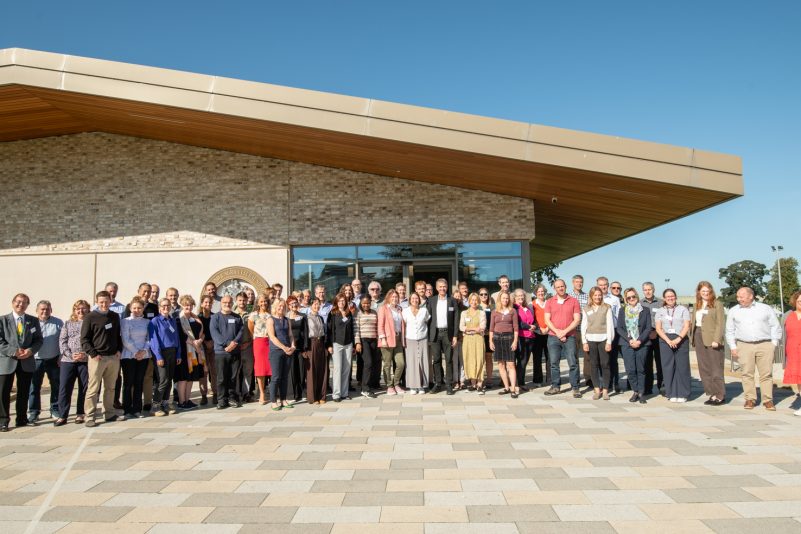
In September 2024 the full LUNZ Hub consortium met for a day-long workshop, with the aims of furthering our collaborative work as a consortium, consolidating working relationships, learning about what is working and not working, and finally celebrating our achievements to date. Read on for our top ten takeaways from the day:
1. LUNZ work can be communicated in a range of ways
One of the first sessions of the day was built to familiarise participants with communicating their research outputs to a wider audience. Participants were tasked with producing a LinkedIn post, a series of three X posts, a photo or infographic, and a limerick, all describing either the work their group has done so far or is planning over the course of the programme. We received a fantastic range of contributions that we’ll be sharing over the coming weeks, but taking the prize for the best limerick was Georgie Barber of the FFCC:
Our hubris in exploiting oil, Has led to climate turmoil, But answers replete, Lie under our feet, All hail the glories of soil!
2. The Agile Policy centre is receiving regular requests:
In its first 9 months, the Agile Policy Centre and the government teams of the four Nations have developed processes for a range of call-down projects, such as fellowships, workshops, literature reviews, expert analysis and recommendations on options for policies relating to land use and achieving aims of net zero. We have stewarded 8 call-down requests from policy teams in two of the four nations and at UK level through to commissioning. Two have reached final reporting and sign-off.
Six more call-down projects are in the process of commissioning from departments with different remits for public policy. We anticipate the co-construction and delivery of approximately another 20 such projects over the lifespan of the LUNZ Hub. Thanks to all those policy and project teams who have invested time in developing the processes whilst simultaneously delivering findings to policy, thus learning by doing!
3. Confidentiality is an important consideration in call-downs
It was agreed that the processes of commissioning and delivering on call-down processes were progressing towards greater levels of co-construction. This in turn was an appreciation of needs, while respecting responsibilities, and building trust and new relationships. From these relationships greater scope is emerging for sharing findings, and making use of the Hub outputs beyond the four nations governments.
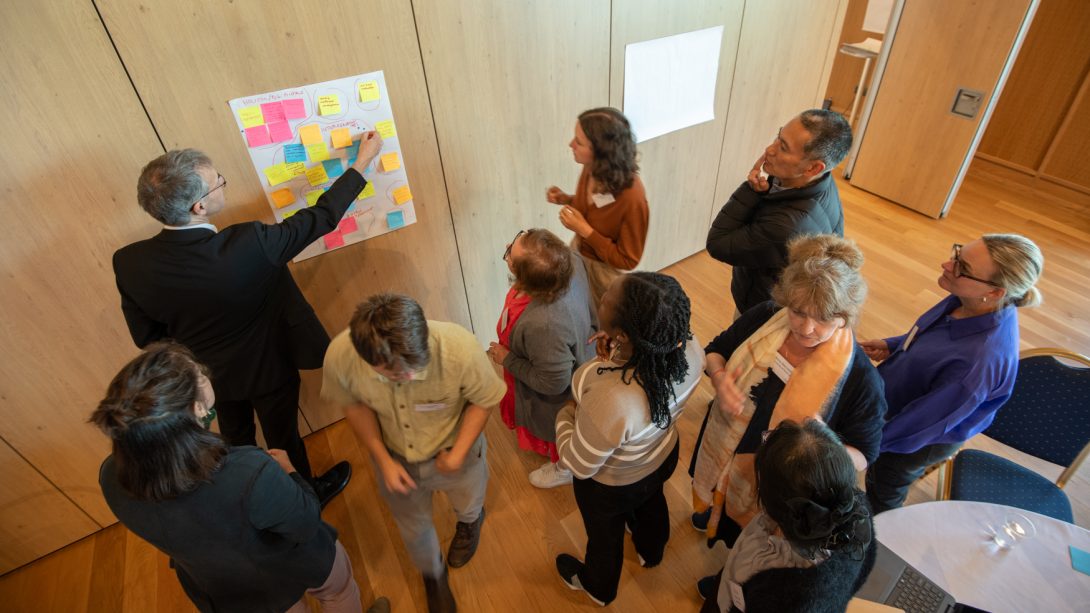
4. We had a chance to move around in the Edinburgh sun
The first session led by WP3 got participants outside to explore different priorities of Climate/Net Zero, Biodiversity/Nature and Society. The aim of the session was to get attendees thinking about priorities for future pathways, how these might differ across organisations, and how realistic is it to achieve these priorities.
Using a triangle axis drawn on the ground, participants we asked to move to the corner of the triangle that best represented their organisations priorities, and discuss in groups why they moved there. Fewer attendees chose the Net Zero corner, raising concerns that without achieving net zero, other priorities might become irrelevant. Those in the Biodiversity corner stressed their role in environmental stewardship, while the Society corner emphasized that societal well-being is essential to progress in both climate and biodiversity goals.
In the second part, participants discussed the synergies and trade-offs between these priorities, and the final round, attendees were asked to consider the most realistic outcome across the priorities. Most participants gravitated toward the triangle’s centre, acknowledging the need for balance across all priorities. However, some stayed outside the triangle, noting that achieving this balance would require significant effort and transformational change.
5. Understanding code of conduct is essential as part of EDI
Through both a role play session and a workshop, some key Equity, Diversity, and Inclusion (EDI) considerations were covered during the day. Firstly, through group discussions, the attendees identified key areas where EDI efforts could be enhanced and outlined specific activities to promote inclusivity within their communities. The workshop aimed at co-producing community activities and training events to designed to build more diverse and supportive environments. Following this, Hub leads took part in a role play session designed to identify where potential breaches of code of conduct might arise, and how they can be approached.
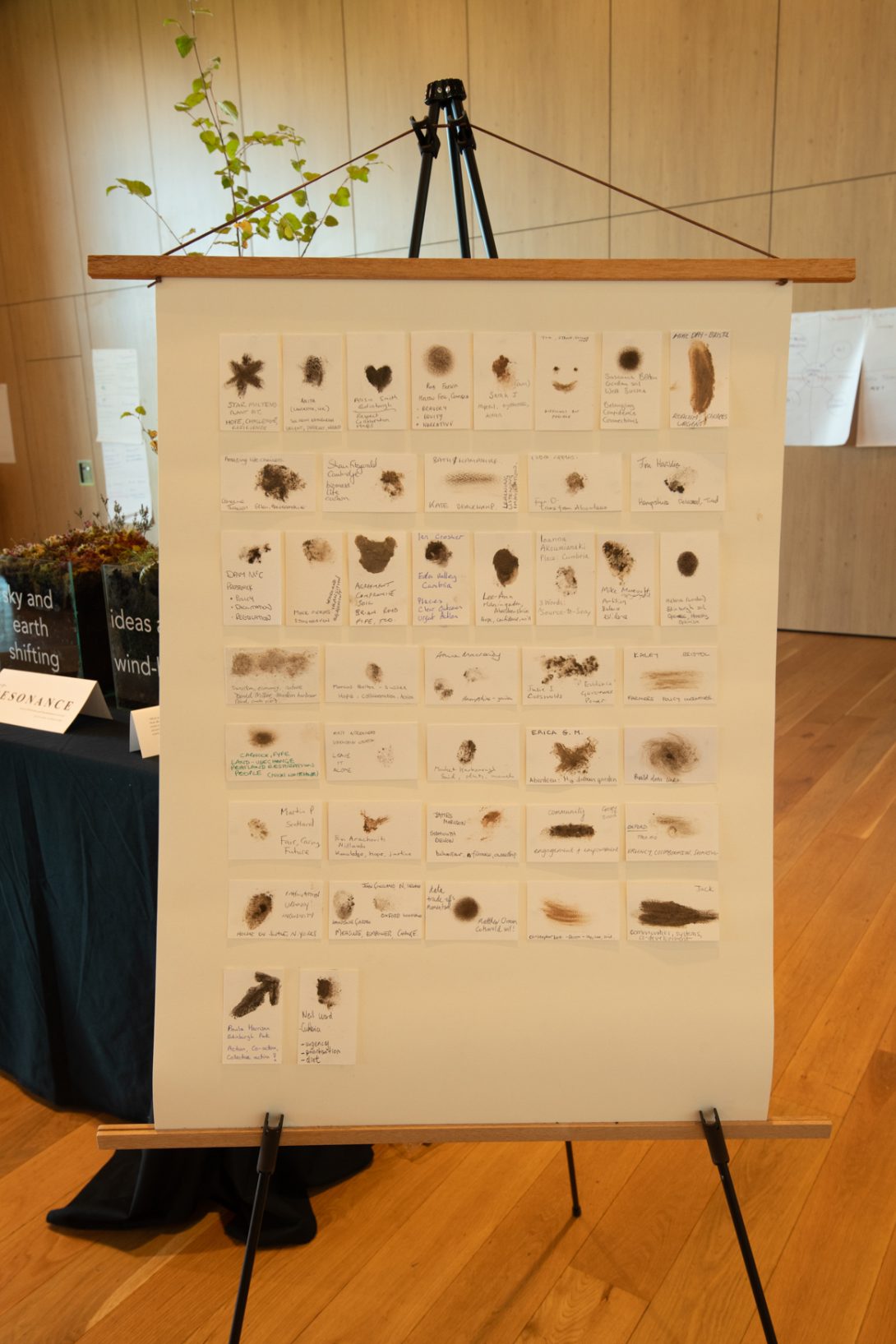
6. ‘Creative’ means different things to different people
Later in the day, WP2 presented the Creative Methods Lab concept as a vehicle to develop and build capacities in transdisciplinary creative research methods, practices, and modes of knowledge exchange for Net Zero research, policymaking and practice. Over the course of some small table discussions, participants explored what creativity means to them, and what the barriers might be to embedding creativity in their work.
Creativity in academic research involves taking risks and stepping beyond conventional boundaries, which can often feel isolating and challenge the status quo. Imagination and curiosity are central to creative endeavours, as they fuel innovative approaches and new ways of thinking. However, societal pressures can hinder creativity, as traditional structures and norms often discourage deviations from accepted standards. By challenging orthodoxy and power structures, creative methods allow researchers to push the limits of knowledge, even though this process may be risky and lonely.
We were also reminded of our own creativity with the help of the PLACE collective. Each participant was asked to bring along a teaspoon of soil, with which they made their mark on a small card, to join a collection of soil prints, expressing the wonderful diversity of both soil and stakeholders in the LUNZ consortium.
7. Lego can help us imagine future scenarios
Another fun session explored pathway creation options through an interactive Lego game, aimed at informing national workshops for WP3 and demonstrating the game’s applicability in LUNZ-related events. Participants used different coloured Lego blocks, each representing 2MtCO2e of emissions reduction or removal, to create a pathway to net zero by 2050. They stacked 26 blocks to balance the 54MtCO2e emitted by UK agriculture and land use in 2022. Groups developed two pathways focused on biodiversity, society, or climate change, comparing them in a plenary discussion, which involved lively discussion of alternative approaches.
Key insights included the need to consider biodiversity, society, and climate together in any land-use scenario, and the challenges of balancing actions. Popular actions were tree planting, reducing food waste, and addressing on-farm emissions. Concerns arose about the land area required for these actions, emphasizing land availability as a key constraint in achieving net zero, biodiversity, and societal goals.
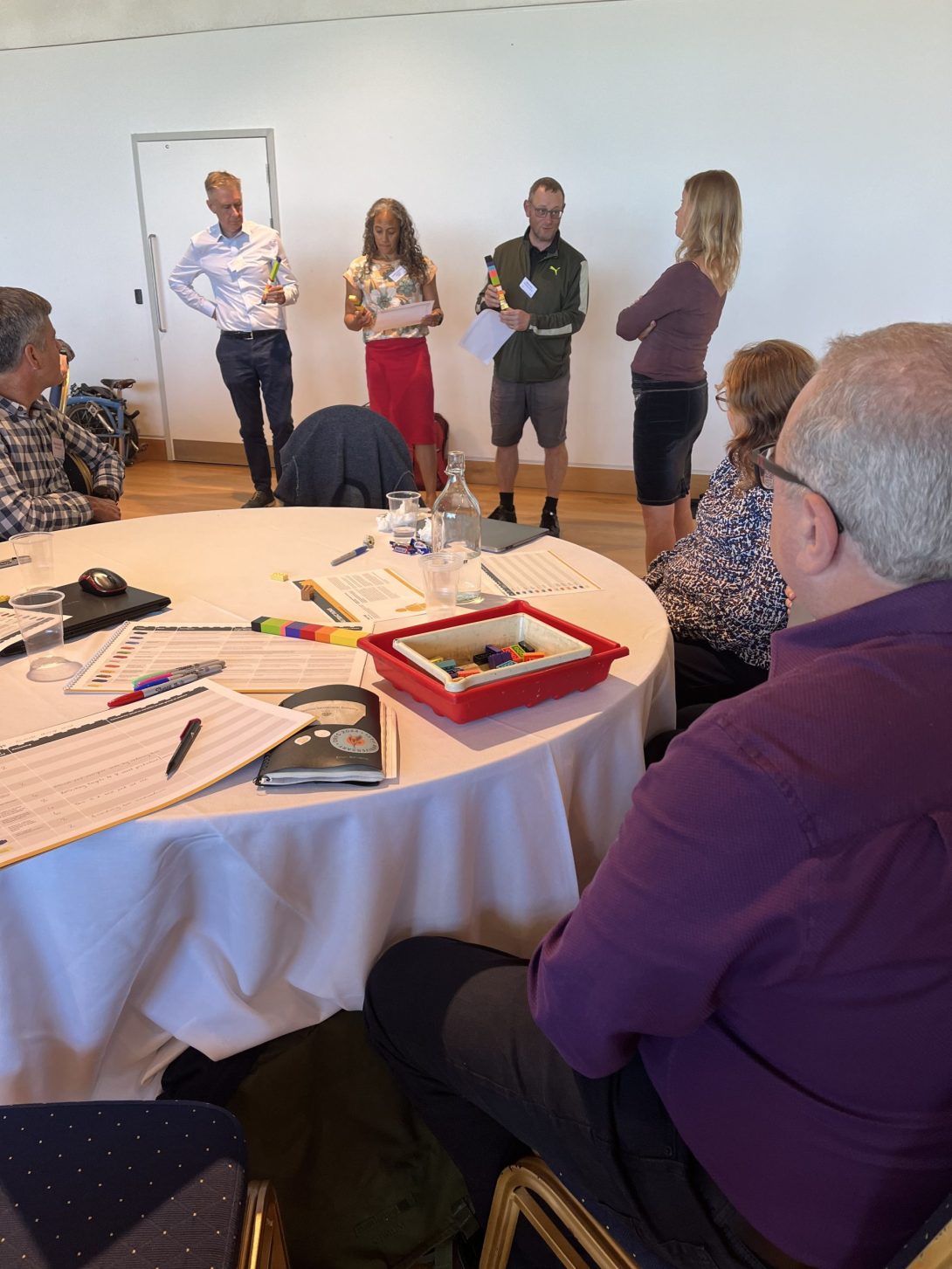
8. The Early Careers Board brings an alternative perspective to large consortia like LUNZ
Before the full consortium meeting kicked off, the Early Career Board met for coffee to discuss their role within the LUNZ Hub. IT was noted that early career individuals can bring fresh perspectives to large research projects, and as they are not yet deeply entrenched in traditional academic hierarchies, they may be more willing to take risks, explore interdisciplinary collaborations, and think outside the box. This fed into a later session in which all participants discussed ways in which EC insights cold be harnessed through various activities over the course of the Hub.
9. Carbon markets are in need of a high-integrity framework
This workshop aimed to develop a static framework for understanding the UK carbon market. This framework would help stakeholders conceptualize the key elements of the carbon marketplace, define what “high-integrity” means for these elements, and track the market’s evolution over time. The session encouraged breaking down silos of expertise, allowing participants with social, technical, and economic backgrounds to better understand each other’s perspectives. The framework, once completed, will provide insights into the carbon market’s value chain, expertise needs, and recommendations for achieving high-integrity, including feedback from experts and guidelines for policymakers.
10. Systems thinking in the Hub is an exciting way to approach our work
This final workshop session focused on identifying and reflecting on the use of systems thinking within the LUNZ Hub. Systems thinking is deeply integrated into various activities, such as modelling, transitions, stakeholder mapping, and co-design, although participants may not always recognize it as such. The workshop aimed to pinpoint the most valuable systems approaches being used and gather cross-cutting insights that could benefit both LUNZ’s future work and government partners, particularly in response to Defra’s interest in how systems thinking is applied. Participants were encouraged to share their own methods and examples to facilitate interdisciplinary learning.
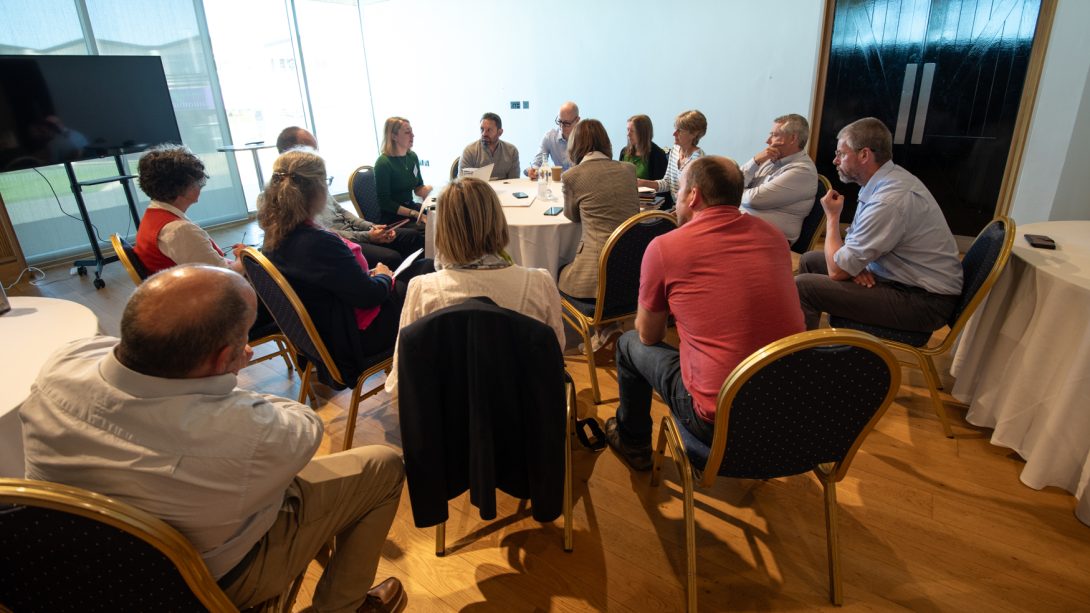
Subscribe to our Newsletter
A quarterly update of all LUNZ Hub activities, events and news stories.
